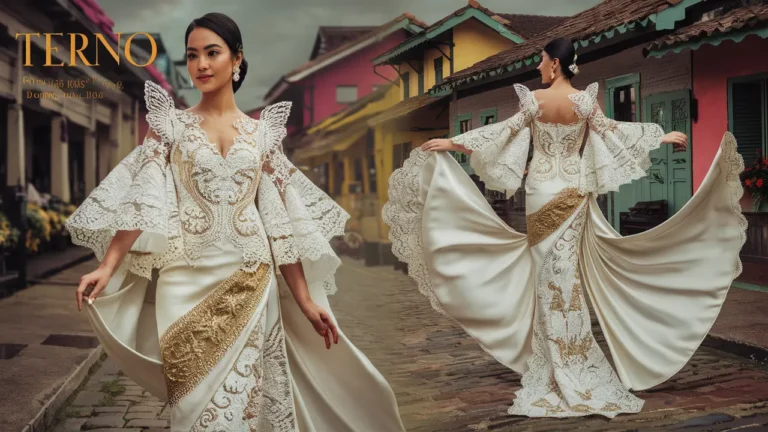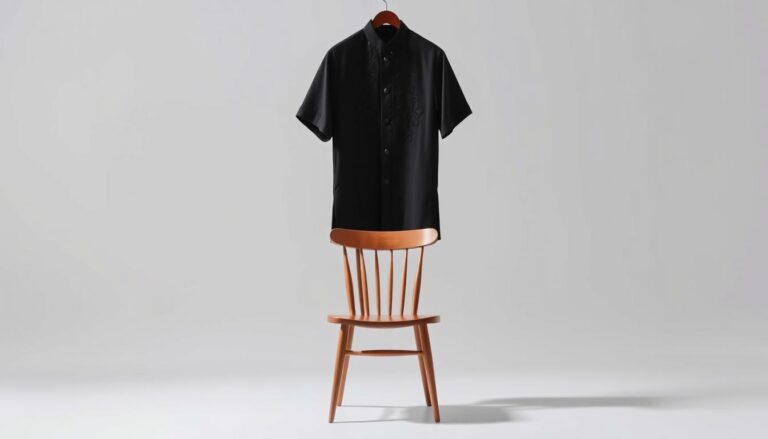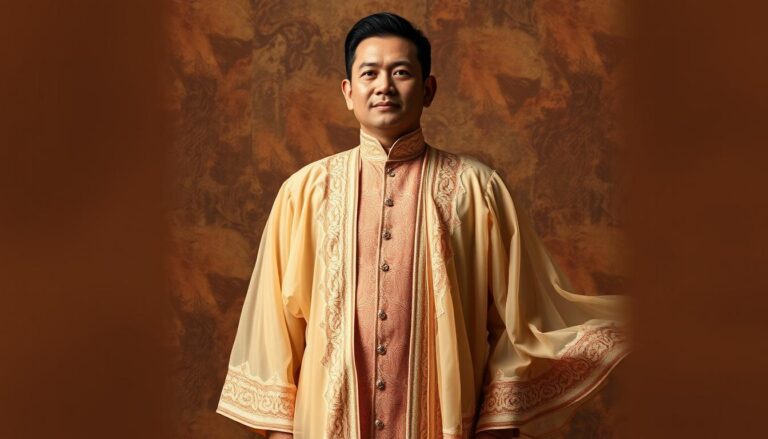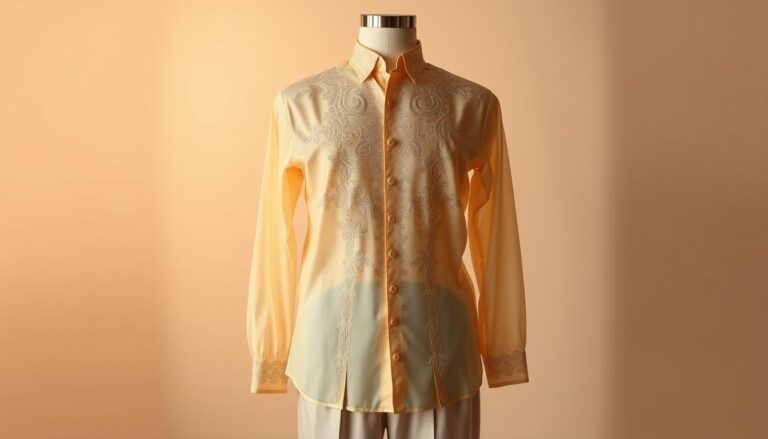Filipino Wedding Traditions
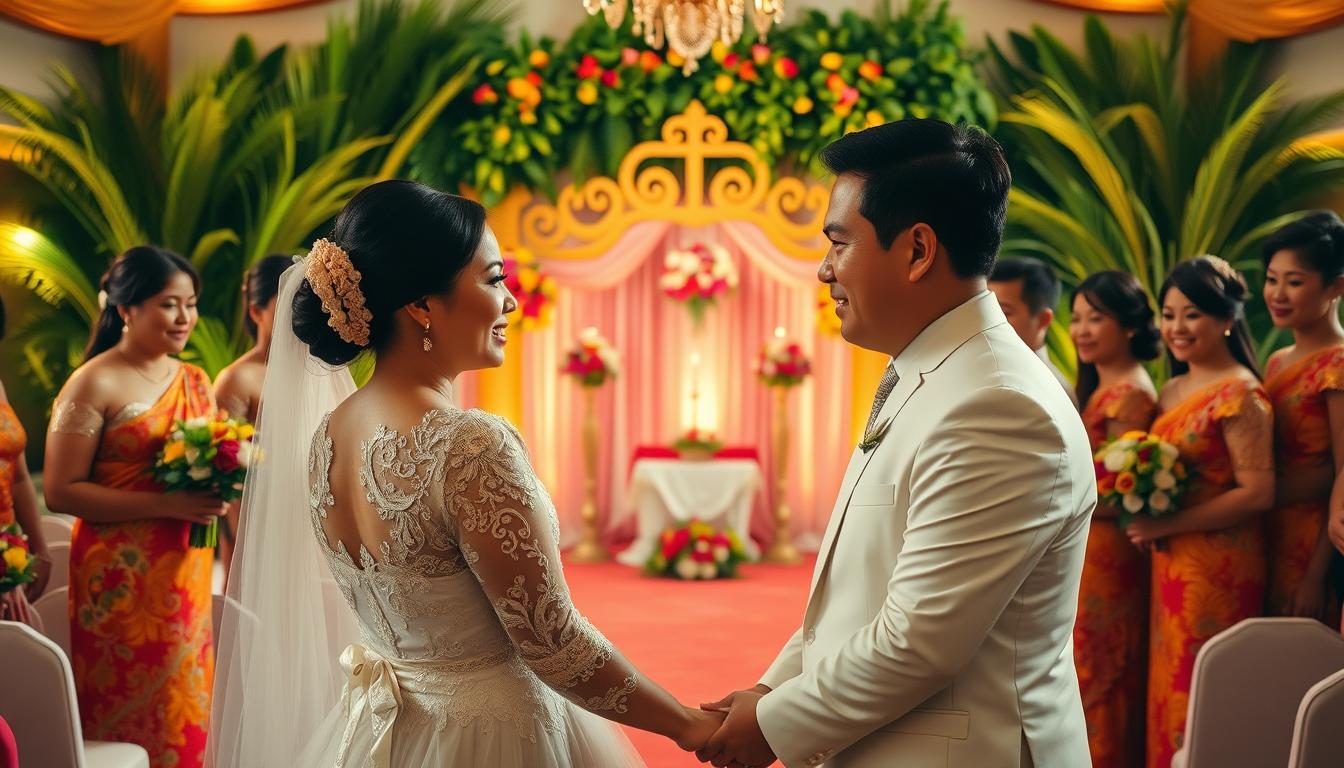
From the vibrant islands of Southeast Asia comes a tapestry of celebrations where cultural heritage meets heartfelt symbolism. These gatherings showcase unique customs shaped by centuries of history, regional diversity, and global influences. With over 7,000 islands contributing distinct practices, every event tells a story through its rituals.
Modern celebrations often blend time-honored ceremonies with contemporary flair. Brides might wear intricately embroidered Filipiniana gowns alongside grooms in crisp Barong Tagalog, creating striking visual harmony. Rituals like the coin exchange and veil ceremony highlight commitments to partnership, while lively dances and feasts bring communities together.
Family involvement remains central to these occasions. Elders often lead pre-ceremony negotiations, while sponsors guide couples through symbolic acts of unity. This collective participation reflects deep-rooted values of kinship and mutual support.
As we explore these practices, you’ll discover how historical traditions adapt to modern settings while preserving their core meaning. From ceremonial foods to musical performances, each element serves as a bridge between generations.
Key Takeaways
- Cultural celebrations reflect diverse regional influences across island communities
- Traditional attire merges historical craftsmanship with modern design elements
- Symbolic rituals emphasize partnership and communal support
- Multi-generational participation strengthens family bonds
- Contemporary adaptations preserve core values while embracing new trends
Introducing Filipino Wedding Traditions
Every marital union in this archipelago weaves together generations of shared values and rituals. These gatherings highlight how two individuals become partners through shared duties while honoring their roots. Family members often lead symbolic acts, turning personal vows into collective promises.
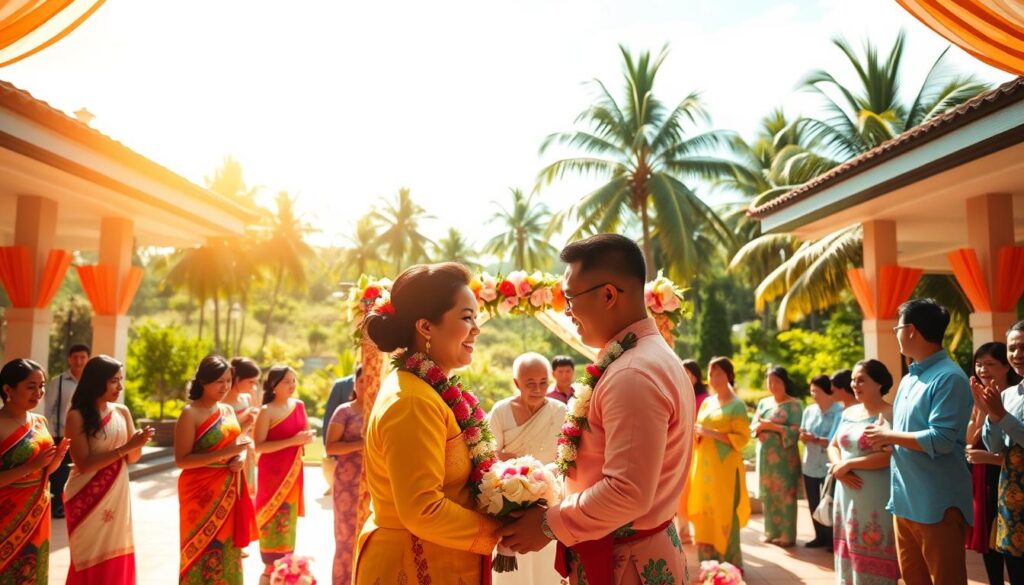
Cultural and Historical Significance
Central to these events is the belief that love extends beyond the couple. Elders and sponsors guide rituals like the veil and cord ceremonies, which date back centuries. The veil, draped by parents, signifies unity. A woven cord, often prepared by relatives, represents an unbreakable bond.
Modern adaptations preserve these customs while adding personal touches. For example, couples might exchange coins to symbolize mutual support—a practice rooted in Spanish influence. Others present roses to their mothers, blending gratitude with ancestral homage.
| Ritual | Symbolism | Family Role |
|---|---|---|
| Veil Ceremony | Unity and commitment | Parents place the veil |
| Cord Ceremony | Eternal bond | Relatives drape the cord |
| Coin Exchange | Shared responsibility | Sponsors present coins |
Such practices transform the ceremony into a community celebration. Guests contribute through dances or financial gifts, ensuring the couple begins life with broad support. This interplay of old and new keeps cultural legacies alive across generations.
Historical and Cultural Roots of Filipino Weddings
The intricate ceremonies seen today trace their origins to centuries of cross-cultural exchange. Spanish colonization introduced Catholic rituals like the veil and cord ceremonies during the 1500s. These symbols merged with indigenous practices celebrating community bonds.
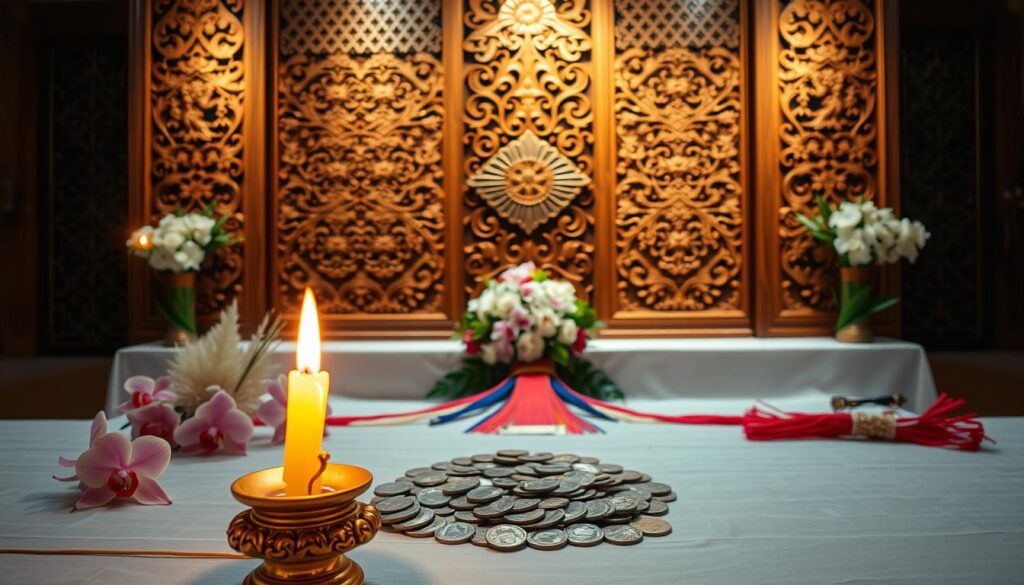
Chinese traders added their mark through the Ting Hun engagement custom, where red envelopes symbolize prosperity. Local island groups preserved pre-colonial traditions like the iteneg dance, performed to honor ancestral spirits. This blending created unique hybrid practices.
| Cultural Influence | Contribution | Modern Symbol |
|---|---|---|
| Spanish | 13 coins (arras) | Shared wealth |
| Chinese | Red motifs | Good fortune |
| Indigenous | Community dances | Ancestral unity |
The bride’s role evolved through these layers. Her white gown nods to Spanish piety, while floral patterns recall native craftsmanship. During ceremonies, sponsors drape the cord in a figure-eight shape—an unbroken loop reflecting eternal commitment.
Colonial-era coins remain central, passed between partners to signify mutual provision. Elders still lead rituals like pamamanhikan, where families formally unite. These enduring customs prove how historical exchanges shape present-day celebrations.
Filipino Wedding Traditions: Essential Rituals and Customs
Ceremonial practices during marital celebrations carry profound meanings shaped by centuries of tradition. Four key rituals stand out for their layered symbolism and role in uniting partners. Each act transforms the day into a visual narrative of shared life and communal support.
The Coin Ceremony (Arras) and Its Meaning
The groom presents thirteen coins to the bride, a ritual rooted in Catholic traditions. These arras symbolize mutual responsibility for financial and emotional well-being. Sponsors often bless the coins, linking spiritual faith to practical partnership.
Cord, Veil, and Candle Rituals Explained
A silk cord loops around the couple in a figure-eight shape, representing endless unity. The veil, draped by parents, signifies protection and shared identity. During the candle ritual, partners light a central flame together, merging individual paths into one life journey.
| Ritual | Symbol | Key Participants |
|---|---|---|
| Coin Exchange | Shared Prosperity | Groom, Bride, Sponsors |
| Cord Ceremony | Eternal Bond | Wedding Sponsors |
| Veil Placement | Unity | Parents |
| Candle Lighting | New Beginnings | Couple |
These acts invite guests to witness the couple’s vows through tangible symbols. The groom’s active role in each ritual highlights equal partnership, while the bride’s acceptance reflects trust. Together, they mark the start of a unified life, celebrated by all present.
Understanding the Roles of Wedding Sponsors
Marital celebrations thrive through the active participation of chosen mentors who uphold cultural values. Sponsors serve as pillars of wisdom, ensuring rituals retain their depth while guiding couples through ceremonial milestones. Their involvement transforms vows into shared commitments witnessed by loved ones.
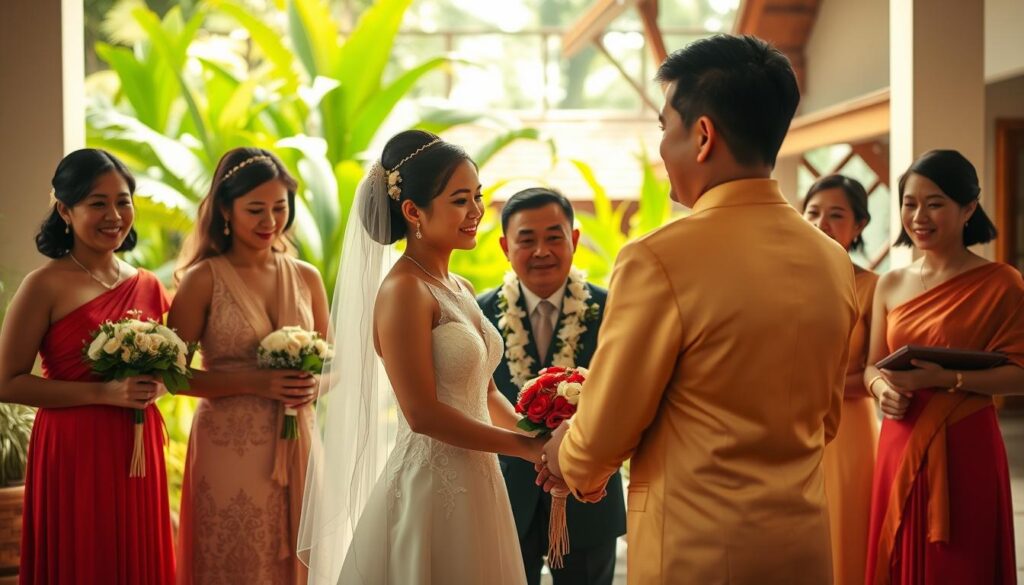
Principal Sponsors: Guardians of Tradition
Principal sponsors, often called ninongs and ninangs, sign legal documents and offer lifelong counsel. Typically respected married pairs, they model enduring partnership. Many wear formal barong tagalog attire, symbolizing their honored role.
Secondary Sponsors: Keepers of Rituals
Secondary sponsors handle symbolic items during key moments. Candle sponsors light unity flames, while cord sponsors drape the figure-eight loop. Veil sponsors place the fabric over couples, visually merging their futures.
| Sponsor Type | Responsibilities | Symbolic Meaning |
|---|---|---|
| Principal | Witness vows, sign contract | Enduring guidance |
| Candle | Light unity flame | Shared journey |
| Cord | Drape ceremonial loop | Unbreakable bond |
| Veil | Place covering cloth | Protective unity |
Selecting sponsors involves careful consideration of shared values. Those wearing barong tagalog or formal attire often represent the couple’s aspirations. Their presence assures rituals flow smoothly, letting filipino couples focus on meaningful exchanges.
Beyond wedding ceremonies, sponsors remain trusted advisors. They reinforce community support systems, helping couples navigate challenges. This network turns marital promises into lifelong partnerships strengthened by collective care.
Elegant Filipino Wedding Attire and Fashion
Celebratory garments transform couples into living symbols of cultural pride during marital ceremonies. These ensembles blend artistic craftsmanship with profound meanings, visually representing unity between partners and their roots. Every stitch and fold carries stories of ancestral heritage, making attire a cornerstone of ceremonial identity.
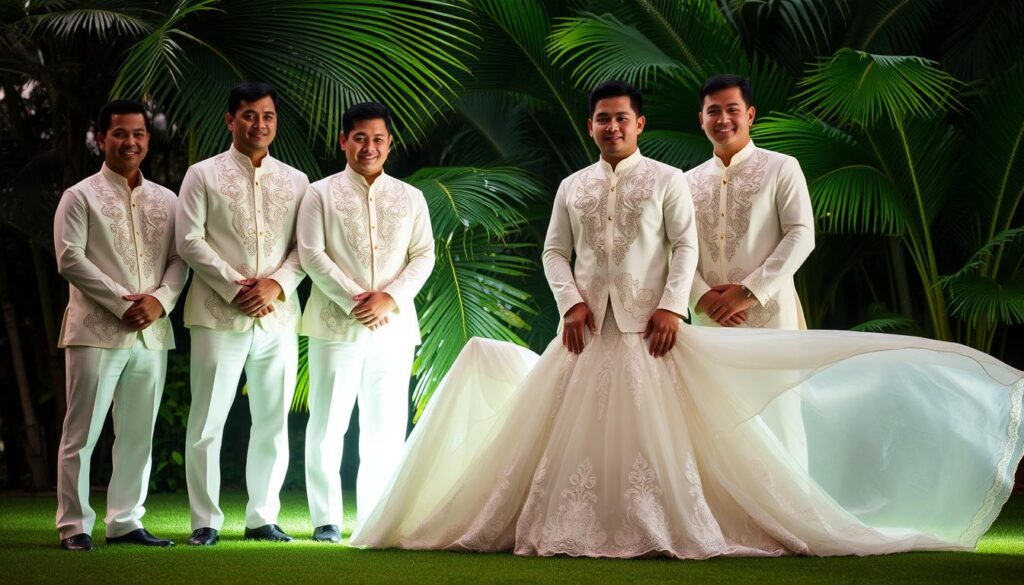
The Groom’s Embroidered Statement
The Barong Tagalog traces its origins to pre-colonial woven fabrics, later refined under Spanish rule. Made from delicate pineapple fiber or sheer jusi silk, its intricate floral patterns symbolize prosperity. Modern versions often feature golden threadwork, honoring families through generations-old embroidery techniques.
The Bride’s Heritage in Motion
Butterfly sleeves and hand-stitched motifs define the Filipiniana, evolving from modest colonial-era dresses to flowing modern gowns. Designers now pair traditional inabel fabrics with detachable trains, allowing brides to celebrate love while showcasing cultural artistry. These garments often incorporate heirloom lace, connecting wearers to maternal lineages.
| Garment | Symbolic Meaning | Key Features |
|---|---|---|
| Barong Tagalog | Shared heritage | Piña fabric, geometric embroidery |
| Filipiniana | Intergenerational unity | Butterfly sleeves, abaca accents |
Local artisans play vital roles in preserving these designs, ensuring each piece reflects community values. Couples abroad often commission outfits from homeland weavers, sustaining cultural ties. Through vibrant textiles and timeless silhouettes, these garments turn ceremonies into celebrations of collective identity.
Reception Revelry: Money Dance and Traditional Filipino Food
Festive energy fills the air as guests transition from solemn vows to joyful celebrations. This lively phase blends symbolic gestures with sensory delights, creating lasting memories through shared participation. Two elements stand out: a dynamic dance for prosperity and a feast showcasing regional flavors.
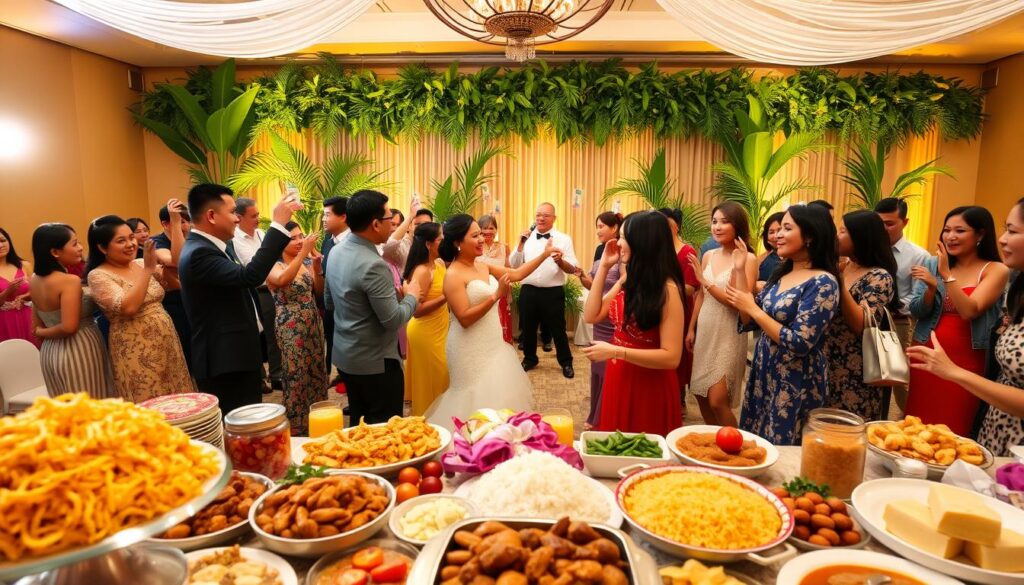
The Money Dance: Sign of Good Fortune
Guests line up to pin bills onto the couple’s attire during this high-energy tradition. Known as the money dance, it’s a playful way to wish financial abundance. The clinking of coins and rustling banknotes accompany upbeat music, turning well-wishes into tangible support.
This custom has roots in communal aid practices, where villages pooled resources for new families. Today, it remains integral to receptions, reflecting how culture adapts while honoring collective values. Some variations include tossing coins into decorative baskets or securing bills with safety pins.
Savoring Authentic Filipino Wedding Cuisine
Tables groan under the weight of slow-roasted lechon and savory pancit noodles—staples symbolizing longevity and unity. Regional specialties like adobo and lumpia highlight diverse culinary influences, offering guests a flavorful journey through local customs.
Desserts like bibingka (rice cake) and halo-halo (shaved ice) provide sweet endings. Each dish carries ancestral significance, transforming meals into edible storytelling. Through these shared experiences, receptions become vibrant celebrations of heritage and community bonds.
Pre-Wedding Rituals and Engagement Customs
Long before the wedding ceremony, couples embark on a journey shaped by meaningful traditions. These practices strengthen bonds between families while honoring filipino culture. From formal requests to symbolic gestures, each step builds anticipation for the couple’s union.
Foundations of Family Unity
Kasunduan marks the official engagement, where partners exchange rings as pledges of commitment. This ritual often includes elders blessing the couple’s future. Pamamanhikan follows, with the groom’s family visiting the bride’s home to seek approval formally.
During these gatherings, families discuss practical matters like dates and guest lists. Shared meals symbolize unity, turning negotiations into celebrations. One elder remarked: “When rice is served together, futures are woven as one.”
| Filipino Custom | Western Equivalent | Key Difference |
|---|---|---|
| Pamamanhikan | Proposal Dinner | Entire families negotiate |
| Paninilbihan | Engagement Party | Groom demonstrates dedication through chores |
| Kasunduan | Ring Exchange | Communal blessings vs. private moment |
Regional variations add depth to these customs. In Mindanao, the Kagen & Taltag ritual involves exchanging heirlooms. Filipino-Chinese families might include Ting Hun, where red envelopes symbolize prosperity for the bride groom.
These practices highlight how traditional filipino values prioritize collective harmony. Unlike Western individualism, every decision involves extended kin. This approach ensures couples enter marriage with broad support, ready to face life’s challenges together.
Modern Adaptations in Filipino Weddings
Today’s couples are reshaping time-honored customs to align with contemporary lifestyles while preserving their core significance. The wedding day now blends ancestral symbols with fresh innovations, creating celebrations that honor heritage through modern lenses. From attire to rituals, every part of the event reflects this dynamic balance.
The cord veil ceremony exemplifies this fusion. While maintaining its symbolism of unity, couples now use cords woven with metallic threads or personalized colors. Some pair them with minimalist veils that complement modern decor themes. These updates keep the ritual visually relevant without diluting its meaning.
Wedding dresses also showcase creative evolution. Designers merge butterfly sleeves with sleek silhouettes, pairing traditional piña fabric with lace insets. One bride shared: “My gown honored my grandmother’s wedding day style but felt utterly ‘me’.” Grooms opt for slim-fit barong shirts in unconventional hues like navy or charcoal.
Technology plays a growing part in planning and execution. Apps streamline guest coordination, while live-streaming lets distant relatives witness ceremonies. Digital invites featuring animated cord veil motifs replace paper ones, reducing waste.
Even the money dance adapts to modern preferences. QR codes displayed beside the dance floor allow cashless contributions via apps like GCash. Others use decorative digital wallets as centerpieces, blending tradition with tech-savvy convenience.
| Traditional Element | Modern Twist | Purpose |
|---|---|---|
| Hand-stitched cord | Metallic or dyed cords | Personalized aesthetics |
| Floral Filipiniana | Geometric embroidery | Contemporary appeal |
| Cash gifts | Digital transfers | Convenience & security |
These innovations prove that cultural practices thrive when they evolve. By reimagining wedding dresses, rituals, and money traditions, couples create events that feel authentic to their generation while respecting ancestral wisdom.
Conclusion
Cultural celebrations across generations blend time-honored practices with modern expressions of unity. These rituals—from candle lighting to coin exchanges—anchor partnerships in shared values while adapting to contemporary life. Sponsors remain vital, guiding couples through symbolic acts that transform personal vows into community commitments.
Festive dance traditions like the money ritual illustrate how joy and practicality intertwine. Guests contribute to the couple’s journey through rhythmic movements and tangible blessings, echoing ancestral support systems. Such customs ensure cultural legacies thrive as living traditions rather than static relics.
At its core, every celebration reinforces the idea that union extends beyond two individuals. Through sponsors’ wisdom, spirited dances, and preserved rituals, couples inherit a tapestry of collective memory. These elements create not just a moment, but a lifelong dance of mutual growth—one where heritage and hope move in harmony.


